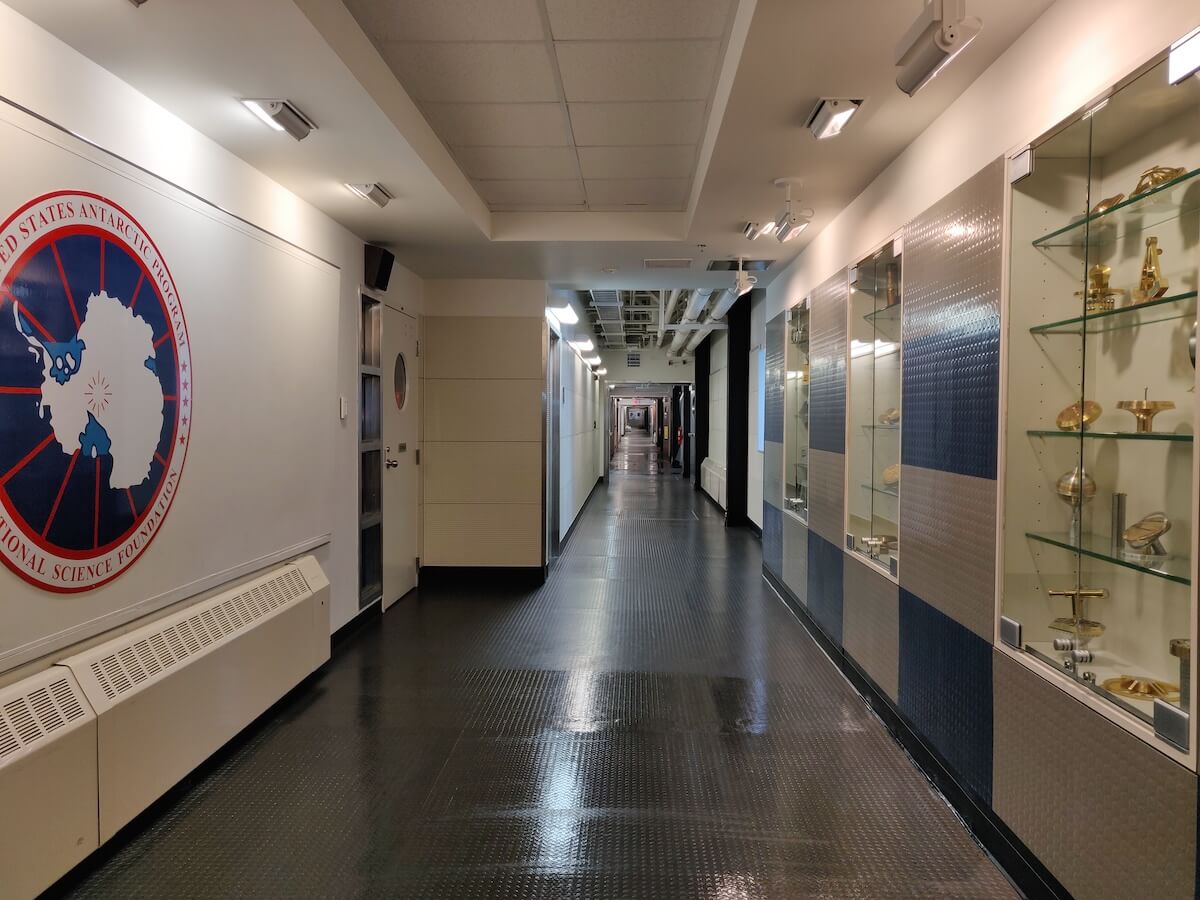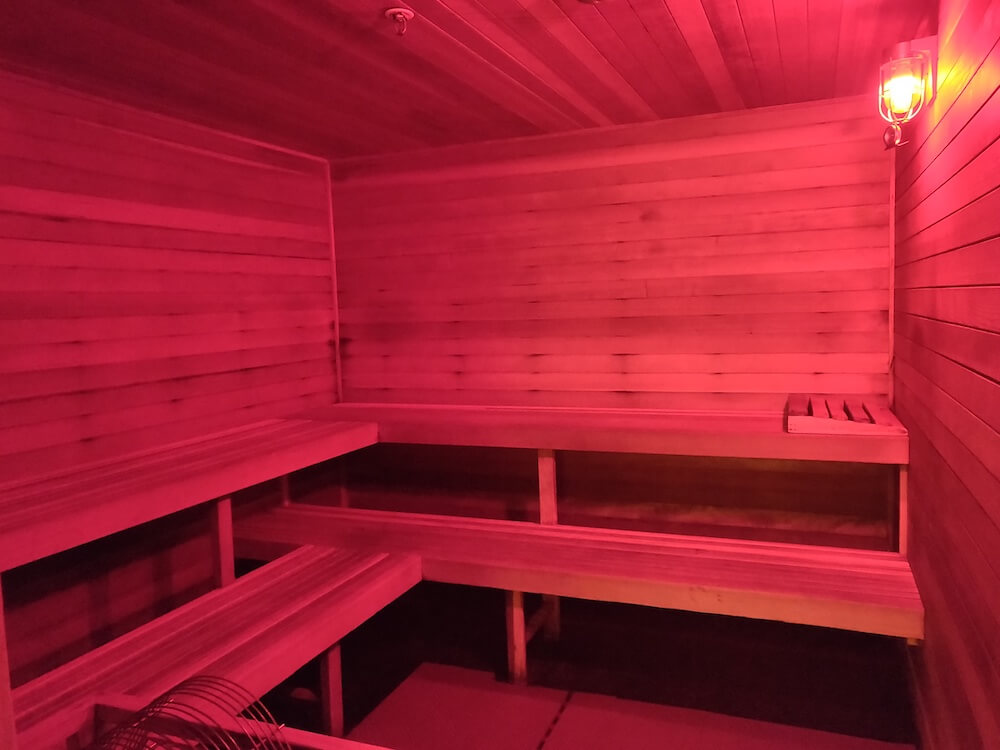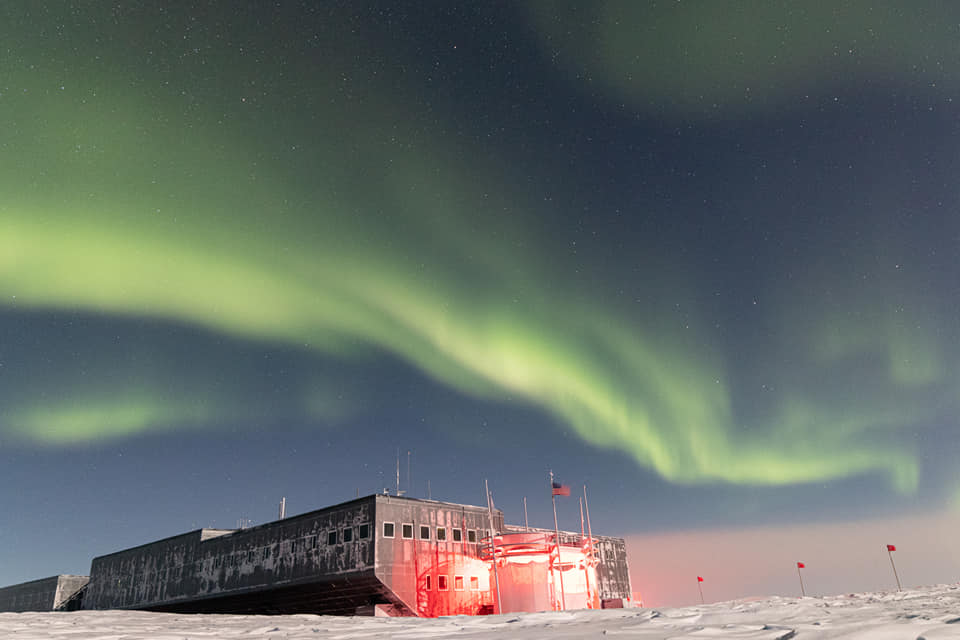Whenever I tell people I’ve worked in Antarctica, specifically at the South Pole, the most common questions I get asked are about what life at the South Pole Station is like.
The short answer:
Working and living at Amundsen-Scott South Pole Station, 90° South, is full of challenges; but it is the ultimate experience of a lifetime many of us Polies (people who have lived at the South Pole) will never forget.
I was fortunate enough to work at Pole during the 2021-2022 austral summer season as a steward.
I’m also the current steward coordinator (front of the house manager) for a full year until November 2023.
While it’s definitely not easy work, I couldn’t be happier about the opportunity to live where few people ever have the chance to visit.
And how often do people get to brag that they’ve been paid to live at the South Pole?!
For those who might be headed down themselves in the future, or those who are just curious, I’ve compiled as much information as I could into this post from my experience working and living at the bottom of the world.
Feel free to use the Table of Contents to jump to specific sections of interest.
[joli-toc]
South Pole Station History and Background

The official name of the station is Amundsen-Scott South Pole Station.
This is in honor of the first two expedition leaders to ever reach the Geographic South Pole in 1911 and 1912: Roald Amundsen (Norway) and Robert F. Scott (Great Britain).
The first South Pole Station was completed in 1957 and is one of three permanent U.S. Antarctic research stations.
The station was upgraded in 2008 and is now an elevated facility.
Outside of the main structure, there are detached buildings used for science and other operational needs.
Related: How I Got Paid to Live in Antarctica: FAQ About Working on the Ice
Where is the South Pole?

The Geographic South Pole is the southernmost point on Earth, located at 90° South.
Every direction from this point is north.
This pole marker is located to the side of the station and is adjusted by approximately 10 meters (33 feet) every year on January 1st to compensate for the shifting polar ice sheet that covers Antarctica.
Because of the South Pole’s unique location, circling the Geographic South Pole means visitors can go through 24 time zones in a matter of seconds.
Near the South Pole Station, there is also a ceremonial pole marker that is used for photo opportunities.
The Ceremonial South Pole is marked by a silver ball on top of a striped red and white pole, and surrounded by the flags of the original 12 countries that signed the Antarctic Treaty in 1959.
Fun Fact: Every Christmas, the station hosts a “Race Around the World” fun run in which participants complete an approximately two-mile loop around the Geographic South Pole.
What is Life Like at the South Pole?

If you think about McMurdo being like a small mining town, then life at the South Pole is similar to living in a space station, but on ice.
An ice station, if you will.
Most of life at the South Pole takes place within the elevated station.
Here you’ll find basic facilities such as living quarters, dining room, lounges, gym, laundry room, and offices.

Because it’s such a harsh environment (more on the weather later) and there’s not really a whole lot to do or see outside, Amundsen-Scott South Pole Station comes with a few amenities that make life for the community a little more enjoyable.
These include a sauna and hydroponic greenhouse, the latter of which is a rarity to anyone familiar with life (or lack thereof) in Antarctica.

Related: 20 Things You Didn’t Know About Life at McMurdo Station, Antarctica
Work at the South Pole

Just like the other U.S. Antarctic Stations, everyone at the South Pole works a minimum of 54 hours a week, six days a week.
The majority of personnel have Sundays off.
Similar to other stations on the “ice” (a common word used for Antarctica by those who work there), the South Pole has a position for any job necessary to keep the little ice station functioning year round.
(Yes, you can get paid to live in Antarctica.)
These positions include kitchen staff, mechanics, equipment operators, electricians, plumbers, and more.
All of these personnel are referred to as support staff, and they ensure that the station continues to run smoothly so that scientists can continue advancing their research.
Related: How to Get Paid to Travel to Every Continent (Yes, Even Antarctica)
How Hard is it to Get a Job at the South Pole?

The short answer is if you’ve never worked on the ice before, getting a job at the South Pole Station is much more challenging than getting a contract at McMurdo Station.
This is because Pole has a much smaller population, which means fewer personnel in each department (sometimes there’s just one role per department) and thus placements are much more coveted.
Personnel will usually have to work their way up to a Pole contract, putting in ice time and becoming experienced enough in their field.
That’s not to say it’s impossible to get a job at the South Pole as a new hire; it certainly happens every year.
However, many Polies previously worked one or more seasons in McMurdo before they landed a contract at the South Pole.
Science at the South Pole

Because of the South Pole’s high altitude, low temperature, and low humidity, it’s the perfect place for research in a number of fields to take place.
This includes glaciology, geophysics, biology, astrophysics, astronomy, and meteorology.
From capturing the historic first image of the Milky Way’s supermassive black hole to even providing insight into how the universe was created, science at the South Pole provides valuable data that is unattainable anywhere else on Earth.
Much of the research takes place in lab facilities outside of the elevated station in two designated areas, the Clean Air Sector and Dark Sector.

These sectors are sensitive and can be affected by light, cell phone or radio signals, and general air pollution.
This means vehicles aren’t allowed into the Clean Air Sector and only red lights are used around South Pole Station’s exterior during the 24 hours of darkness in the winter.
Getting to the South Pole

Because it’s one of the most remote locations in the world, getting to the South Pole isn’t as easy as finding a flight on Expedia.
The typical itinerary for reaching the station goes as follows:
1. Commercial flight to Christchurch, New Zealand
Christchurch is the U.S. Antarctic Program’s gateway city for McMurdo and South Pole Stations.
2. Charter flight to McMurdo Station (3,827 km/2,378 mi)

McMurdo Station is the largest station in Antarctica. This flight is also referred to in the USAP program as the “ice flight.”
Types of planes used:
- United States Air Force C-17 Globemaster III
- New York Air National Guard or Royal New Zealand Air Force LC-130 Hercules
- Royal New Zealand Air Force Boeing 757
- Skytraders Airbus A319
3. Charter flight to Amundsen-Scott South Pole Station (1,350 km/839 mi)

Types of planes used:
- New York Air National Guard LC-130 Hercules
- Kenn Borek Air Basler (modified DC-3)
Flights are only able to operate during the Pole summer season, which falls between late October to mid-February.
During the winter, the station closes and becomes self-sufficient.
Due to extreme cold and low visibility, planes are not able to safely reach the South Pole.
However, there have been a couple of exceptions with rare winter medical evacuations taking place in 2001 and 2016.
What is it like living at Amundsen-Scott South Pole Station?
If I had to describe what it’s like based on my experiences, living at Amundsen-Scott South Pole Station is very similar to working and living on a cruise ship.
You live in a very big building in the middle of nowhere, you share living spaces, and because you’re isolated in a small community, you end up bonding with other members/Polies over silly events and parties created to pass the time.
Related: What Working on Cruise Ships is Really Like: Pros & Cons
Living Accommodations
The majority of personnel live inside the elevated station in single or double rooms (the latter reserved for couples).
The single rooms are either 3×5 or 4×5 ceiling tiles large and consist of an extra-long twin bed, a wardrobe, a dresser, and a desk.
Bathrooms are dormitory style with one located outside each housing section (“berthing wing”).
The bathrooms include a couple of shower stalls as well as some shelves to store personal toiletries.
Water and Showers
Water is a precious resource at the South Pole.
Because the station has to produce its own water by melting and treating ice, every Polie is encouraged to reduce their water usage.
This means that most personnel are allowed two 2-minute showers per week, with the exception of certain departments such as kitchen staff or mechanics.
Lifestyle and Recreation

While life at McMurdo Station is a mix of college meets military base, life at the South Pole is a little slower and more laid back.
Think Spring Break in Cancun vs. a holiday in the Maldives.
But colder, obviously.
Although the Pole station is smaller than McMurdo and lacks an official bar, it does have a variety of facilities and activities available, including the following:
- Fitness: community-led exercise classes, weight room, gymnasium, climbing wall, South Pole Marathon, Race Around the World
- Leisure: Craft Room, Music Room, Sauna, Greenhouse, Game Room, Movie Lounge
- Social Events: board game night, trivia, open mic/talent shows, film/tv series showings, themed parties, Annual South Pole Head Weighing Contest
Below is a peek into what the inside of Amundsen-Scott South Pole Station looks like:







Community Responsibilities
Community involvement is big at Pole, and everyone is encouraged to help out where it’s needed.
Usually, this means keeping the dormitory bathrooms and showers clean.
Because there’s no full-time janitorial position, life at Amundsen-Scott South Pole Station means everyone is expected to take turns cleaning their bathroom once a week in what’s referred to as “house mouse.”
Community members can also volunteer their time in the dish pit as there is typically only one steward per shift washing all of the meal dishes from the community as well as the pots and pans used by the chefs.

During the holidays, there is a designated community cook day where the galley staff is given a day off in lieu of working on the station’s special days off (Thanksgiving, Christmas, New Year’s, etc.) and various departments sign up to cover shifts both in the kitchen and in the dish pit so that the station continues to be fed.
Population and Demographics

In a regular summer season, the Pole Station population can reach upwards of 150 people, while 40-50 scientists and support staff will keep the station running in the winter.
Like most Antarctic stations, the majority of personnel are men.
While the ratio fluctuates season to season, generally speaking the split is usually 80% men and 20% women.
At one point during my summer at Pole, I was one of 15 women among a station population of roughly 80 people (give or take).
Internet and Communication

Unlike McMurdo Station, South Pole Station does not have regular internet access.
Pole relies on satellites for outside communication.
This means that the station only has decent internet for 4-6 hours a day.
Some days there is technically up to 10 hours of access possible, but the third satellite, SkyNet, is often too slow to use.
Because of the satellite’s orientation to Earth, internet access begins 4 minutes later everyday.
At the start of the summer season, internet access will be available later in the night and by the end of the summer it will have moved to the middle of the afternoon.
Relying on satellites also means that regular phone calls and emails cannot be received or sent outside of satellite hours.
(Emergency phone calls can still be made using Iridium satellite phones.)
This can take some adjustment for those used to life in McMurdo where phone calls or email access is 24/7 (albeit slow or laggy).
You can find the weekly South Pole Station satellite service schedule here.
Food

The South Pole Dining Room offers three hot meals a day Monday- Saturday with an added Brunch meal on Sunday in the summer.
The kitchen typically runs on a 35-day menu cycle with popular dishes and items recurring more frequently.
Meals are often themed for cohesiveness, such as Asian fusion lunches or steak night.
There are always fresh baked goods (breads and desserts) available for each meal as well as vegetarian/vegan items.
Because South Pole Station has its own greenhouse, fresh greens may also be available year-round depending on the harvest.
Otherwise, Pole is completely dependent on resupply flights from McMurdo Station.
Special meals are prepared for the holidays (Thanksgiving, Christmas, New Year’s, Midwinter Dinner, etc.) and there is also a grab-and-go fridge available 24/7 with leftovers for community members to help themselves to.
Wildlife
There is none.
Unlike McMurdo and the Antarctic Peninsula, Amundsen-Scott South Pole Station is, well, as south as it gets and there’s no chance for natural wildlife to survive there.
No seals, no whales, no penguins, and no skua— typically, although one wayward skua did make it all the way to Pole once.
Seasons

The South Pole experiences 24 hours of sunlight between November and February (austral summer).
After the sun sets on March 23, Pole experiences twilight throughout April until approximately May 10– the first day of night and 24 hours of darkness.
Amundsen-Scott frequently sees bright auroras (Southern Lights) during the winter due to its location in the auroral zone and the absence of light pollution.
The light begins to return in August and the sun returns in late September.
Related: Antarctica Northern Lights & Southern Lights Guide 2023
Weather and Climate

So how cold does the South Pole get?
In the austral summer, the average temperature at South Pole Station is approximately -18°F (-28°C) and -76°F (-60°C) in the winter.
The warmest South Pole has ever been was 9.9°F (-12.3°C) and the coldest was -117°F (-82.8°C).
Elevation and Humidity

Amundsen-Scott South Pole Station sits at an elevation of roughly 2835 meters (9,300 ft).
Humidity is nearly nonexistent at Pole, making it a polar desert.
The air is both extremely thin and dry.
The harsh high-altitude environment can take a toll on your health: small cuts take weeks to heal, climbing a flight of stairs knocks the wind out of you, and minor body aches have you feeling twenty years older.
I also woke up nearly every morning with dried blood in my nose and went through a box of tissues weekly.
It can be rough.
Can You Visit the South Pole as a Tourist?

Yes— if you have enough money.
Most people who go to the Amundsen-Scott South Pole Station for free or as part of their job are either researchers, support staff, or distinguished visitors (program representatives, government officials, etc.)
However, if you don’t fall under one of these categories, it’s still possible to visit the South Pole as a tourist.
There are several luxury expedition tour companies that take clients to various sightseeing spots around Antarctica, including a quick trip to the South Pole.
The visit to the Pole could last anywhere from just an hour or two to camping overnight.
Depending on the company and tour package, these excursions can cost between USD 51,000–250,000 per person.
Final Thoughts: Life at Amundsen-Scott South Pole
While life at the South Pole can be hard on the mind, body, and soul, I’d still highly encourage anyone who has the opportunity to work at Pole to do so.
After all, it’s such a unique experience that many people are willing to pay upwards of a quarter of a million dollars to merely spend a few hours visiting where we get paid to live.
Additional Antarctica Posts:
- How I Got Paid to Live in Antarctica: FAQ About Working on the Ice
- 20 Things You Didn’t Know About Life at McMurdo Station, Antarctica
- McMurdo Station Packing List for Working in Antarctica
- How to Get Paid to Travel to Every Continent (Yes, Even Antarctica)
- Antarctica Northern Lights & Southern Lights Guide 2023
Save and Pin







Wow, what a great guide! Thank you so much for sharing this :)
I’m always so fascinated by your stories and this one was no exception! I can’t imagine how physically and mentally challenging it must be to live here but like you said, it’s such an incredible and rare experience that sounds totally worth it at the same time! Also, this is just so wild: “visitors can go through 24 time zones in a matter of seconds.” Thanks for sharing! Xx Sara
Thanks, Sara! Definitely was an adventure for the books :)
Wow! This is fascinating! Thank you so much for sharing your experience.
Wow! What an amazing experience. I found this fascinating to read, I’ve always wondered what it was like to live and work at the South Pole. It looks challenging, but it also looks amazing. You’ve inspired me to start looking at whether it would be possible for me to go!
It’s definitely possible! You can take a look at my guide here on how to get a job in Antarctica :)
What an amazing experience. Thanks for sharing. I’m impressed by how nice the inside of the facility is. The library is great!
Thanks for the great info!!
My son heads out next week!
We’re so excited (and anxious).
You have an incredible talent for writing simply but extremely clearly.
Thank you so much for sharing your adventures and stay safe.